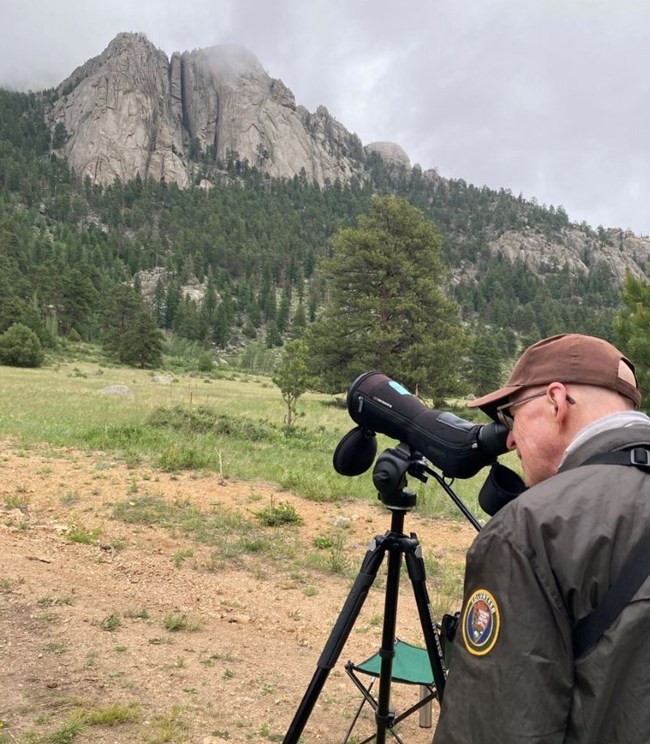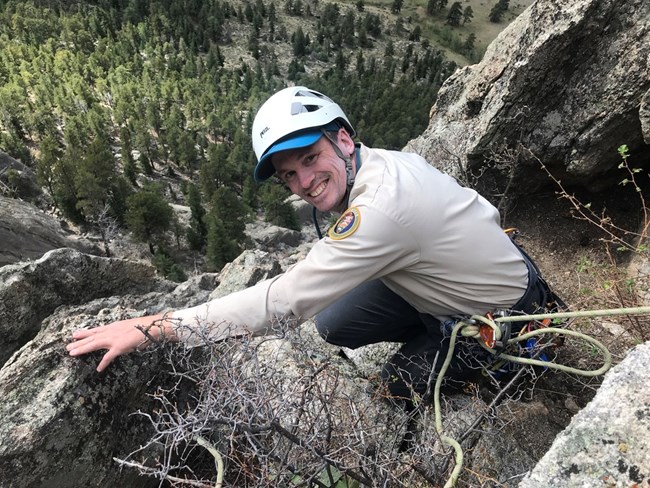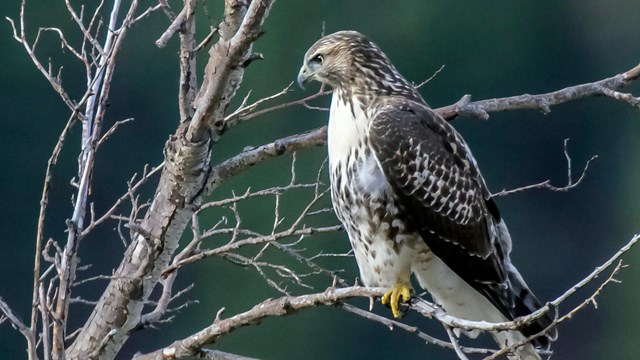
NPS Photo/S. King
Raptor Monitoring Supports Adaptive Management
Raptor monitoring is one of several ways park managers protect raptors, or birds of prey, in Rocky Mountain National Park (RMNP). The park’s Raptor Monitoring Program began in 1989. This long-term dataset provides information on species diversity, occupancy, and distribution. Monitoring data also captures trends in breeding and nesting activity, nest attempts vs nest success, and the number of raptor offspring that successfully reach independence (known as fledglings). This information can serve as an indicator of population longevity and help inform management actions (like temporary closures) that protect raptors from human disturbance at popular climbing and hiking areas.
RMNP’s Raptor Monitoring Program relies on dedicated park staff and volunteers to gather observations from known nesting locations across the park. On average, over 300 hours of monitoring occur each season.
Where We Monitor
Raptor monitoring takes place at known roosting and nesting locations across the park, including locations where temporary raptor closures have been enacted to protect raptors. Rock formations that provide nesting habitat at Lumpy Ridge and Cathedral Wall are monitored by NPS staff and volunteers. The Bald Eagle communal winter roost near the Colorado River, adjacent to the park, is monitored by Colorado Parks and Wildlife and the U.S. Forest Service.

NPS Photo/Dr. R. Ramey
How We Monitor
During the breeding season, each raptor nesting territory is monitored every one to two weeks. A monitoring session lasts four hours with observations recorded at least every 15 minutes. Monitors identify raptor species, presence or absence of a breeding pair, and behavior (courting, copulation, food deliveries, territorial defense, etc.) Location of nests are recorded when possible.
After the nesting season, RMNP Climbing Rangers and volunteers may attempt to locate nests to investigate the causes of nest abandonment or failure. Nest locations are protected, and data cannot be shared with the public by law.
How We Use Monitoring Data
Monitoring data help inform the timing and extent of adaptive, temporary closures which are enacted February – July to protect raptors from human disturbance during their breeding and nesting period.
- For nest sites where breeding activity has occurred, managers wait two weeks after fledglings leave the nest to lift the closure to ensure the young are no longer dependent on the nest. This usually occurs by July 31 but could be later.
- For nest sites where no breeding activity is observed, monitoring continues until at least June 1 before a recommendation is made to lift the closure early (i.e., prior to July 31). This gives birds whose nests may have failed elsewhere time to reestablish a nest on the known site before disturbance is introduced. Monitoring has shown that, in the park, a nest site that remains unoccupied after June 1 will not be occupied that year.
- If evidence of nesting is found in a new location, a new temporary closure may be recommended depending on the risk of human disturbance to that nest.
According to past monitoring data, 54% of temporary raptor closures are lifted early (i.e., prior to July 31st), 10% are extended (i.e., past July 31st) and 36% are lifted on time (i.e., on July 31st).
Explore the results of 2022 Raptor Monitoring Surveys Here

Curious about which raptors live in Rocky? Find out more here.

Explore RMNP's Raptor Monitoring Program Results

Explore Current Raptor Closures in RMNP
Raptor Management Across the NPS
Last updated: January 23, 2025
